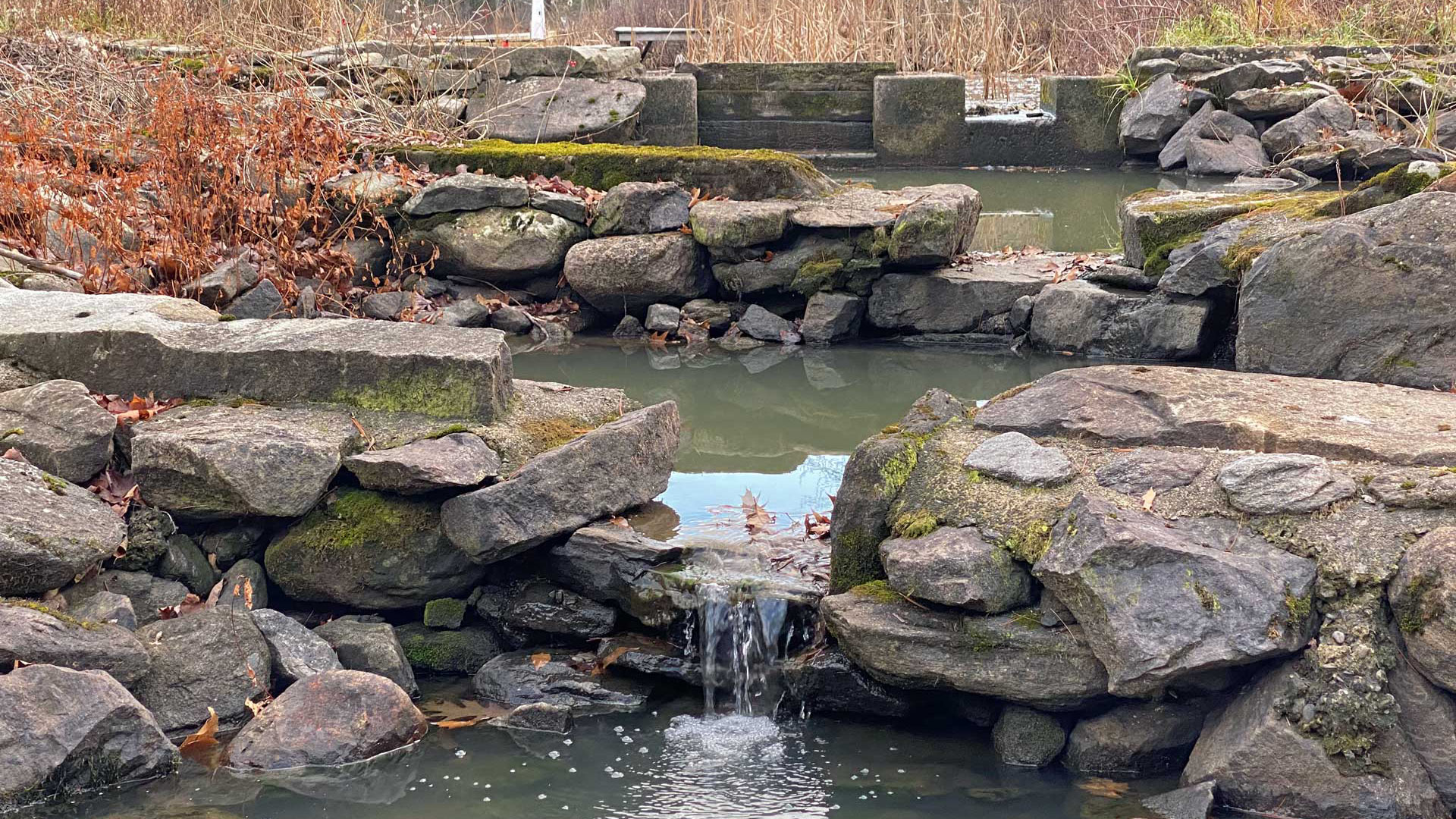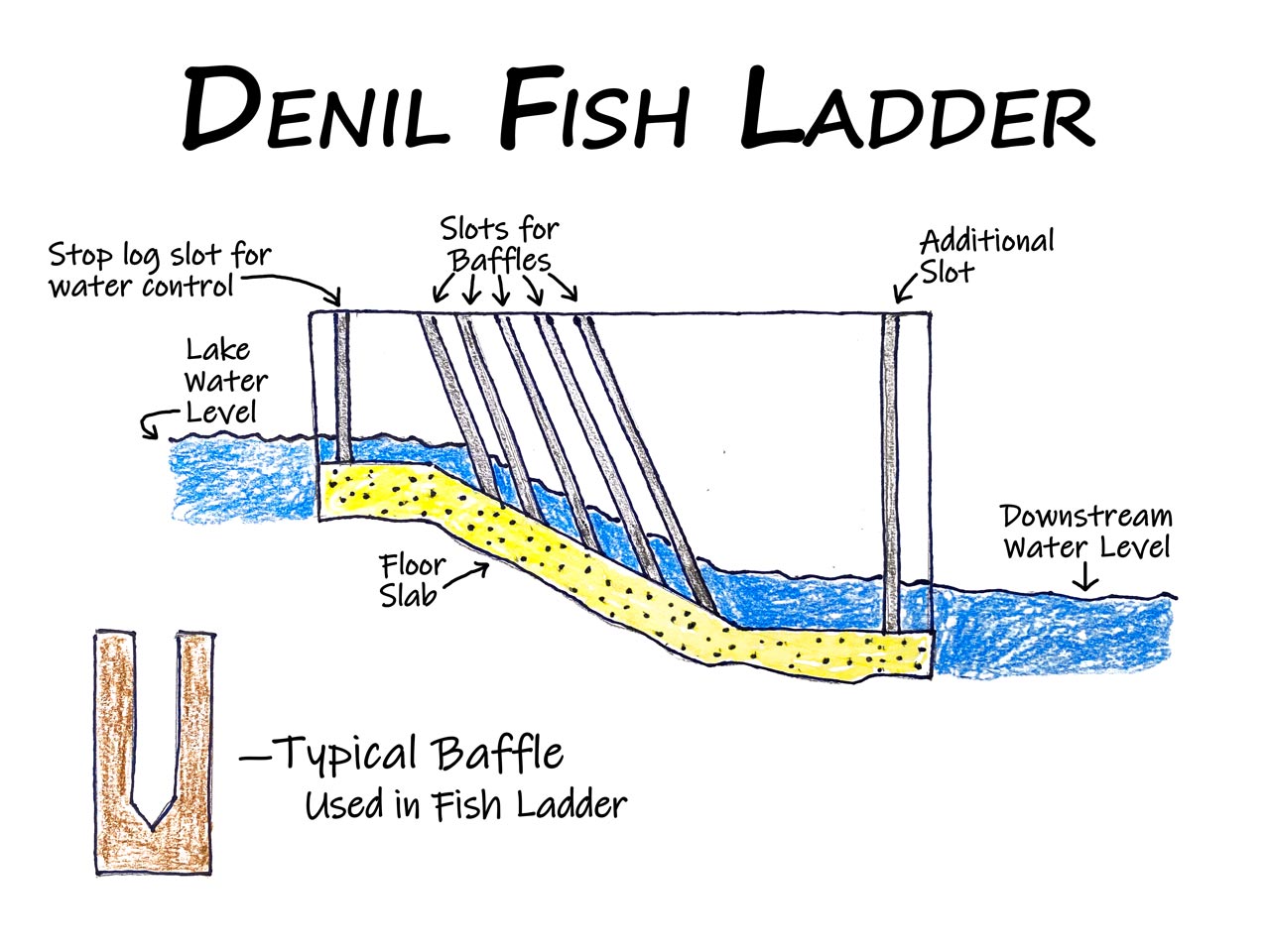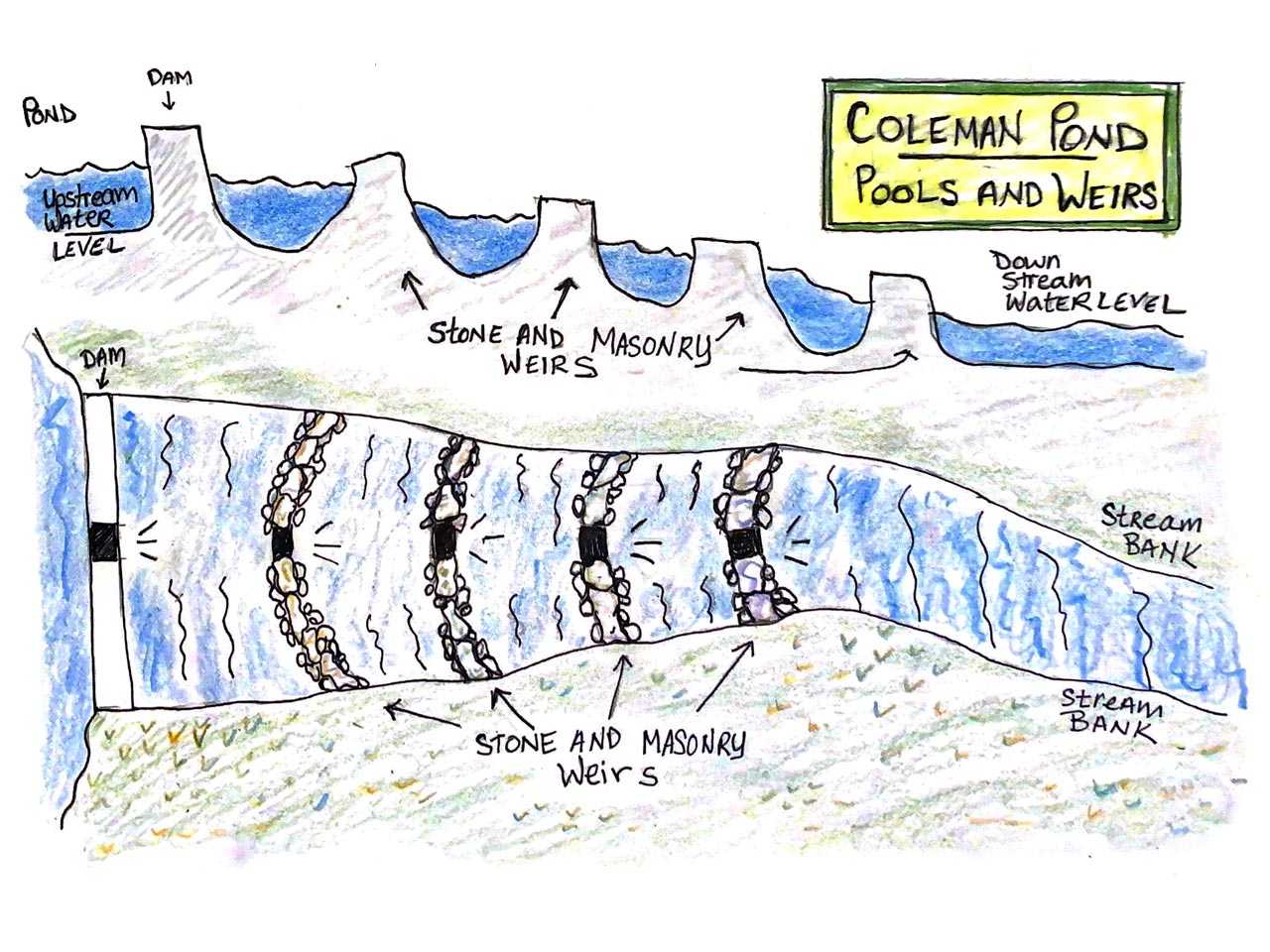Fish Ladder Construction on Maine Rivers
Linkel Environmental Construction has a long history of working with government and environmental organizations dedicated to increasing the populations of native Maine fish such as Alewives and Salmon.
We Build Fish Ladders
We work closely with environmental organizations, engineers, biologists, and towns to bypass man-made barriers like dams and culverts. Our primary solution is the creation of a well constructed fish ladder. Fish ladders increase the opportunity for fish to migrate back to their spawning and rearing habitats to reproduce. Their purpose is to allow the fish the opportunity to rest and prepare for their next leg up the fish ladder. We’ve created a few diagrams to explain the different types of fish ladders we construct. See below.
Fish Ladder Solutions

Denil Fish Ladder
The Denil Style Fish Passage is designed as a straight channel with baffles angled against the flow of water at regular and short intervals. This design effectively dissipates water force and unlike other fishways allows for a steeper slope. Resting pools are created at intervals with the swimming performance of the fish in mind. Relative to other fish ladders, the Denil fish ladder is more compact which makes it suitable for existing dams.

Pools and Weirs Fishladder
It is one of the earliest design styles to help fish travel upstream. We have two examples on this page. One is for the Coleman Stream near Lincolnville, Maine and the other is for Patten stream in Surry, Maine.

The Coleman Stream fishladder design uses small dams and pools to create a sloping channel for fish to travel upstream.

The Surry fishladder on Patten Stream allowed alewives to manage the 5 foot slope and successfully reach their freshwater spawning grounds.
Strong Relationships with Environmental Agencies
Over the years Linkel Environmental Construction has worked closely with the Atlantic Salmon Federation; the Department of Marine Resources; Maine Inland Fisheries and Wildlife; Department of Environmental Protection; National Oceanic and Atmospheric Administration; and the National Resource Conservation Service to name a few.
We appreciate the opportunity to do good work. We’re experts at building fish ladders with minimal damage to the rivers and streams of Maine and their surrounding environments.
